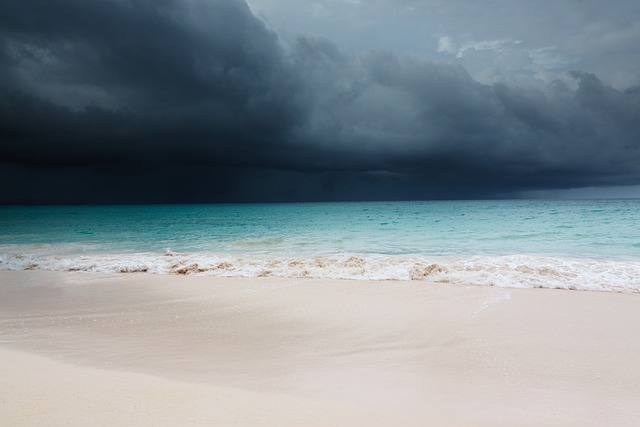[ez-toc]
Hurricane Milton’s Tornado Frenzy: A Perfect Storm of Factors
Hurricane Milton, which pummelled central Florida as a Category 3 storm, left a trail of destruction in its wake. But, the storm’s arrival was preceded by an even more striking event: a record-breaking tornado outbreak. Dozens of tornadoes ripped through the Sunshine State, a surreal precursor to the hurricane’s main assault.
Tornadoes are ferocious, rotating columns of air that descend from thunderstorms to the ground. These powerful phenomena can wreak havoc, flattening buildings and flinging objects through the air like projectiles. While tornadoes are often associated with the periphery of hurricanes, the sheer number that appeared in Florida was truly exceptional. CNN reported that National Weather Service stations issued over 125 tornado warnings, dwarfing the previous record of 69 warnings during Hurricane Irma in 2017.
So, what caused this tornado frenzy? Why was Hurricane Milton so conducive to these dangerous weather events?
We also Published
- Morphology and Embryology: Comprehensive Insights
Explore the intricacies of Morphology and Embryology with comprehensive insights. - Agnikul Successfully Launches SOrTeD %%page%% %%sep%% %%sitename%%
Agnikul successfully launches SOrTeD, achieving milestones in semi-cryogenic technology and marking India’s first private launch. - Questioning Common Medical Practices: More Harm Than Good?
Questioning Common Medical Practices: such as how common medical practices like thickening liquids for dementia patients and stopping blood pressure medications before surgery may not be as beneficial as previously thought. Explore the conflicting evidence surrounding spinal cord stimulators for chronic pain.
Tornadoes, whether on the Great Plains or the East Coast, require a specific set of conditions. The Storm Prediction Center in Norman, Oklahoma, is known for its frequent tornadoes, but only during the spring when the region experiences warm, humid air conducive to thunderstorms. Florida, on the other hand, is warm and humid year-round but lacks the necessary wind shear – the difference in wind speed and direction at different altitudes.
Enter Hurricane Milton. “The hurricane is what brings in the increased wind profile you wouldn’t otherwise have,” explained Thompson, an expert in weather forecasting. This combination of wind shear and the warm, moist air present in Florida created a recipe for tornado formation.
Why was Hurricane Milton so different?
Hurricane Milton’s tornado frenzy was due to several unusual factors, including a rare hurricane path, rapid intensification, and the timing of the storm’s arrival. The storm formed in the western Gulf of Mexico and moved eastward towards Florida, an atypical path for hurricanes hitting the Sunshine State.
Most hurricanes striking Florida originate in the Atlantic, approaching from the east or southeast. However, Milton’s unique trajectory brought it in from the southwest. This atypical path contributed to the unusually intense tornado activity. The storm’s rapid intensification, escalating from a Category 1 to a Category 5 hurricane in a short period, also played a crucial role.
Why was it a “perfect storm” for tornadoes?
The storm’s outer spiral bands, carrying warm, moist air, arrived in Florida during the afternoon, increasing the intensity of thunderstorms. Coupled with the increasing winds from the hurricane, these conditions created an environment ripe for tornado development.
A weak frontal zone, characterized by cooler temperatures and rain, was present north of central Florida. This frontal zone further contributed to the formation of tornadoes. The interplay of these factors, including the unusual hurricane path, rapid intensification, and favorable atmospheric conditions, created a perfect storm for tornado formation.
What were the main factors contributing to the tornadoes?
The following factors contributed to the unprecedented number of tornadoes in Florida:
| Factor | Description |
|---|---|
| Hurricane Milton’s path | The storm approached from the southwest, an unusual direction for hurricanes hitting Florida, which typically originate in the Atlantic. This trajectory brought warm, moist air into the state, creating favorable conditions for tornadoes. |
| Rapid intensification | Hurricane Milton rapidly intensified from a Category 1 to a Category 5 hurricane, further increasing the wind shear and creating a more unstable atmosphere. |
| Timing of storm’s arrival | The outer bands of Hurricane Milton arrived in Florida during the afternoon, allowing thunderstorms to heat up and strengthen. |
| Presence of a weak frontal zone | A weak frontal zone north of central Florida provided a boundary for the storm’s interaction, creating more favorable conditions for tornado formation. |
The tornado outbreak associated with Hurricane Milton was a reminder of the unpredictability of nature. It was a stark demonstration of how a complex interplay of factors can lead to extreme weather events.
RESOURCES
- All the Ways Hurricane Milton Made History
- Tornado damage from Milton across Palm Beach County, …
- Hurricane Milton deadly tornado path grows Fort Pierce to …
- Far from where Milton hit, tornadoes wrought unexpected …
- 5 reasons Hurricane Milton’s tornado outbreak was historic
- Weather tracker: Outbreak of tornadoes foreshadowed …
- Fuel shortages hinder Hurricane Milton cleanup efforts in …
- Hurricane Milton triggers EF-3 Tornado in Florida’s Palm …
- Milton’s tornadoes kill 6 in senior community by Fort Pierce
- Why Hurricane Milton Caused So Many Tornadoes
- Drone video shows path of destruction left by pre-Milton …








0 Comments